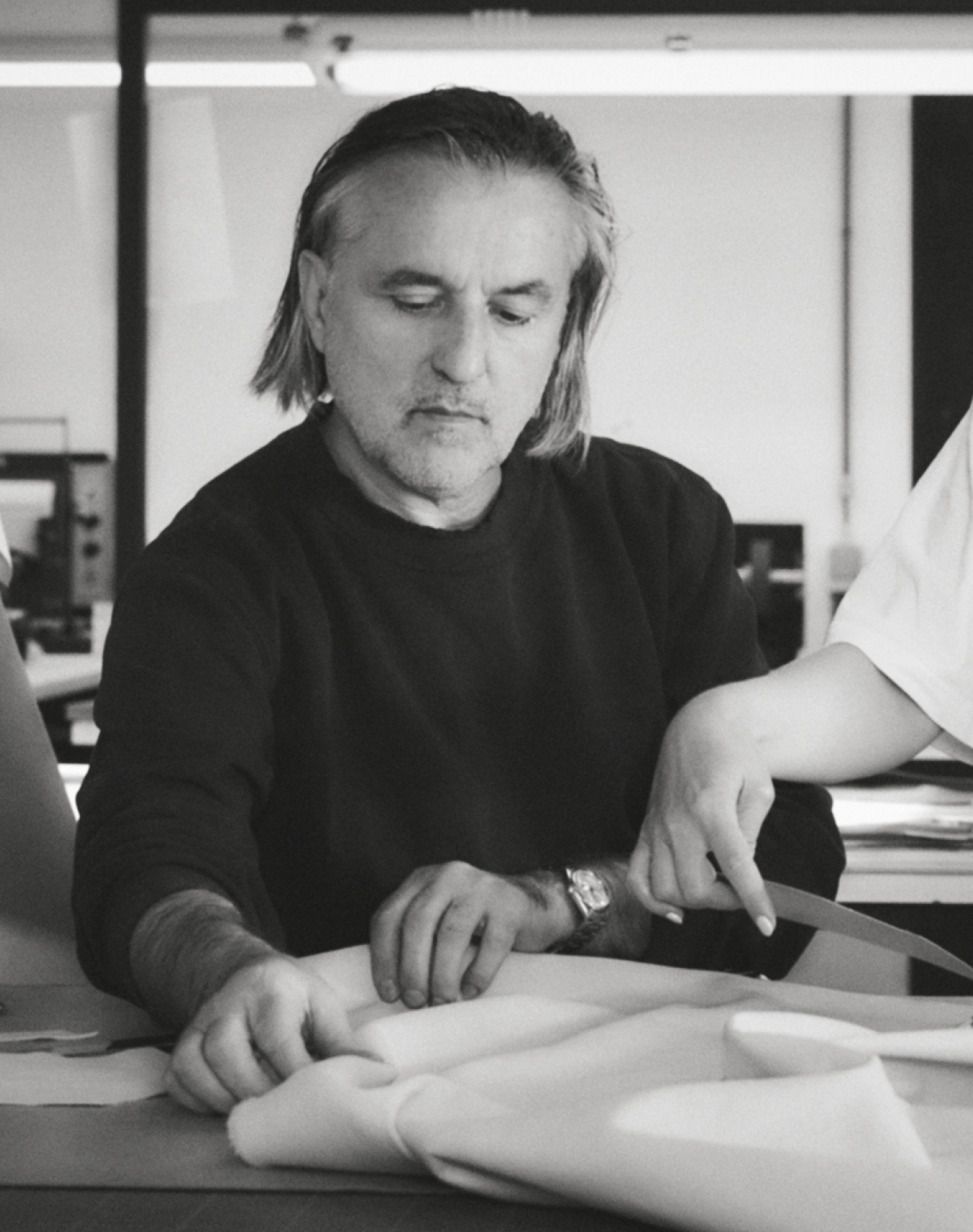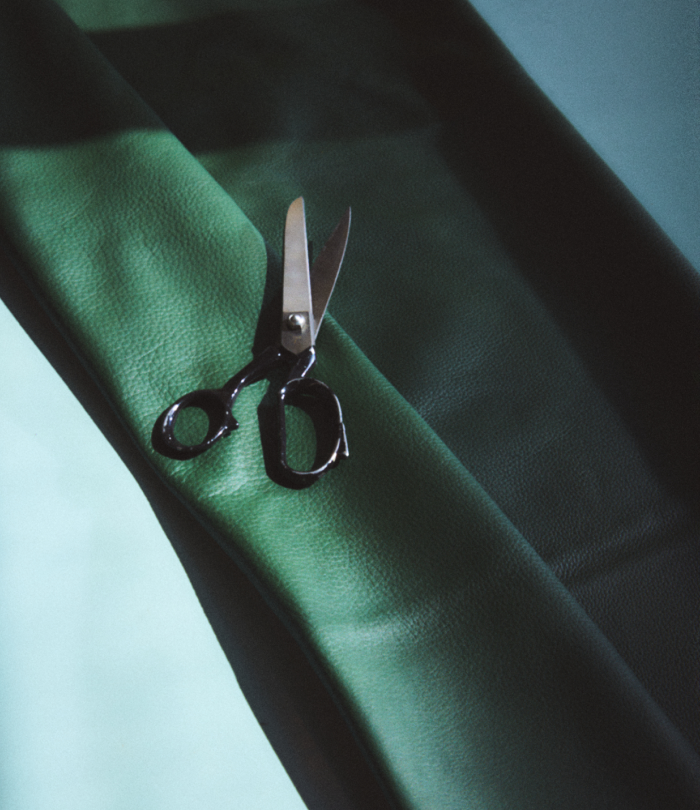In Conversation with Creative Director Kostas Murkudis

What was your starting point when designing your At.Kollektive pieces?
The idea all actually came from a conversation I had with Panos Mytaros, CEO of ECCO and ECCO Leather. We were in the tanneries, and he was explaining to me that he really wanted to create new ways of working, new visions for bags and leather goods. So it quickly became clear to me that in this project I should be focussing on new technologies. I didn’t want to do anything that looked traditional, or use something like the classic top stitch, whether it would be small and tiny, almost invisible, as you see with classic bags, or oversized, as is a fashion with many popular bags at the moment. So, I decided to move away from that, and try something that looked new. So, I decided I really didn’t want to have any seams – no stitching at all. So everything would just looked folded, almost like an envelope.
So you wanted your bags to look very clean, and minimal?
Yes. And it’s ironic because when you look at the bags I created, they look very simple, but
actually in reality we spent a really, really long time trying to figure out the construction.
It took us ages to find the right way to do those bonded seams. They look very, very clean, but
they are actually complex. And even though they are handcrafted they have these look as if they
are machine designed or machine made
– very minimal, and sharp lines.

And tell us about the references for the shape and the folds; the idea of paper bags, envelopes?
Well I liked the idea of combining this pioneering technique, that is hard to do, with an image or reference that is quite humble, a simple, day-to-day thing. I think that starting point - taking something that is quite known, familiar - but then trying to find my own take on it is a common thread within my work. I felt it was fun, as a concept, too. And I’m happy with the result.
Some of the bags come with gold-plated metal at the bottom. Tell us about that?
Well, the technique is actually something that comes from high-level watch-making. We worked with a company in Italy that are specialised in this very intricate metal work. You can really see the hand of the Italian craft, which has such a long history. This was quite a new idea for me – using plated gold is not really my vocabulary. But I was interested in trying something different, and creating something that was a little precious. I had this sort of Cartier-esque chicness to it, the sense of the intricacy of jewellery, even though it’s still very minimalistic. It feels new.
And what was it like, working with the leather?
Leather is probably one of the first materials that has been used to cover the human body. It has been used for centuries. It’s linked to music culture, street culture, subculture, but also it can be in very technical environments; you think of motorcycle biking suits, or protective-wear. It’s very attractive to me – the tactile experience of touching leather. I’ve used it a lot as a designer, and I have been fascinated by it since I was a child, I remember seeing historical leather pieces in a museum as a child – beautiful moccasins and costumes – and being totally enamoured. I love the durability of leather; the sense of growing history, and longevity. With this project, I liked the idea of creating something that you could give to your kids or grandkids. That is sadly rare in fashion, the idea of creating something that will be relevant for more than a couple of years.


You have also created footwear, ready to wear and furniture. Tell us about those?
I am proposing, alongside the bags, only one shoe, and one piece of furniture – a
chaise longue made from folded aluminium with leather cushioning. There is also simple black leather
outerwear – very classic, minimalistic. I have done furniture in the past, but never something on
this scale, and I’m very curious to do more. This is what was so special about the project, to me,
the chance to develop new
fields, new objects, new ideas. It’s like a chocolate shop of
potential, and you are the little boy or girl. That’s how it felt – like excitement and freedom.
What was it like being one of four different designers?
I really like the fact that it’s called Kollektive, because this sounds like a bunch of interesting people, meeting, and trying something together. It didn’t feel like our creativity was just be bought – it was like a fair deal, a dialogue, a chance for us to gain something as well. And it felt like a family. Isaac and I have worked together in the past. Natacha, I know and we respect and admire each other. And then Bianca, she’s the youngest, she almost felt like the little sister of the group. It felt very different to other collaborations. There is a very Greek saying, that when you invite someone to your home, you say, you can cook, you can use my things, my kitchen. And obviously both Panos and I are Greek, and I really got that impression from him, that sensation. That the collaboration was about openness and genuine sharing. This is how collaborations in fashion should work – not just two big names coming together for the sake of it, or an artist being paid for his images to just be put on clothes.
Why does this project feel right for now?
In the wake of the lockdowns, everyone in fashion – all the big names, all the young voices – are saying that we have to think about how to make things different. Thinking about new forms of production, more sustainable practices. I don’t want that all to just be talk, for everyone to just return to the same things. But I worry it will. However, At.Kollektive has different values. It’s about a different process, a different way of acting towards each other, a different way of taking responsibility, and a fresh way of thinking about progress and potential.